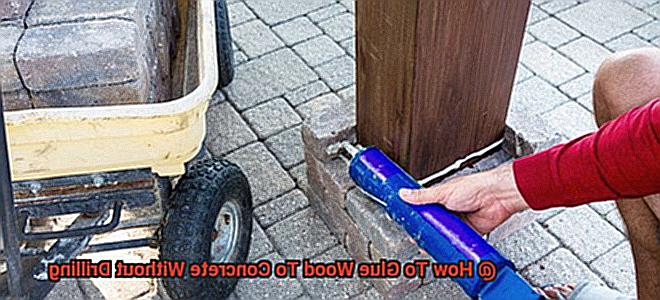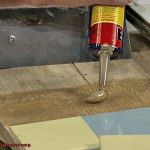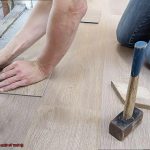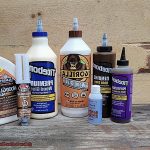Are you tired of drilling holes in your concrete surfaces every time you need to attach wooden objects? Do you want to avoid creating permanent holes in your walls or floors while mounting shelves, picture frames, or other items? Well, we’ve got good news for you. There’s a simple and effective way to glue wood to concrete without drilling.
Not only does this method save you time and effort, but it also prevents any damage to your concrete surface. You’ll be amazed at how easy it is to achieve a strong and lasting bond between wood and concrete with just a few simple steps.
In this blog post, we’ll share with you some of the best techniques for gluing wood to concrete without drilling. We’ll explore the different types of adhesives available and provide tips on how to get the best results. Additionally, we’ll discuss the importance of surface preparation and walk you through each step of the process.
Whether you’re an experienced DIY enthusiast or just looking for a solution to a specific problem, this post is for you. With our expert advice, you’ll learn how to glue wood to concrete like a pro and take your home projects to the next level. So let’s get started.
What You Need to Know Before Gluing Wood to Concrete
Contents
- 1 What You Need to Know Before Gluing Wood to Concrete
- 2 Adhesives Used for Gluing Wood to Concrete
- 3 Using Construction Adhesive for Gluing Wood to Concrete
- 4 Using Liquid Nails for Gluing Wood to Concrete
- 5 Using Two-Part Epoxy or Polyurethane Resins for Gluing Wood to Concrete
- 6 Pros and Cons of Glue Bonded vs Mechanical Fasteners
- 7 Important Considerations When Gluing Wood to Concrete
- 8 Tips for Successful Glue Bonded Joints on Wood and Concrete Surfaces
- 9 Conclusion
It’s critical to keep a few crucial considerations in mind before diving into the project. By doing so, you can ensure a reliable and long-lasting bond that will stand the test of time.
First, it’s essential to choose the right type of adhesive. Not all adhesives are created equal, and some are better suited for bonding wood to concrete than others. Look for construction adhesives specially formulated for this purpose, such as two-part epoxies or polyurethane formulas. Using the wrong adhesive can lead to weak or failed bonds. Therefore, research is essential before selecting an adhesive.
Next, ensure that both surfaces are clean and dry before applying the adhesive. Dirt, dust, or moisture on either surface can impede the bonding process, resulting in an unreliable bond. Thus, it’s crucial to thoroughly clean and dry both surfaces beforehand.
It’s also important to consider the weight of the wood and any stress that will be placed on the bond. Heavy pieces of wood or those subjected to movement or stress, such as stair treads or handrails, may require additional fasteners or reinforcement for added strength.
Finally, read and follow the manufacturer’s instructions for your chosen adhesive carefully. Different adhesives have different application methods, curing times, and other requirements. By following the instructions meticulously, you’ll achieve optimum results.
While gluing wood to concrete without drilling may not be as strong as using mechanical fasteners like screws or anchors, it’s an excellent solution for certain applications where drilling is not feasible.
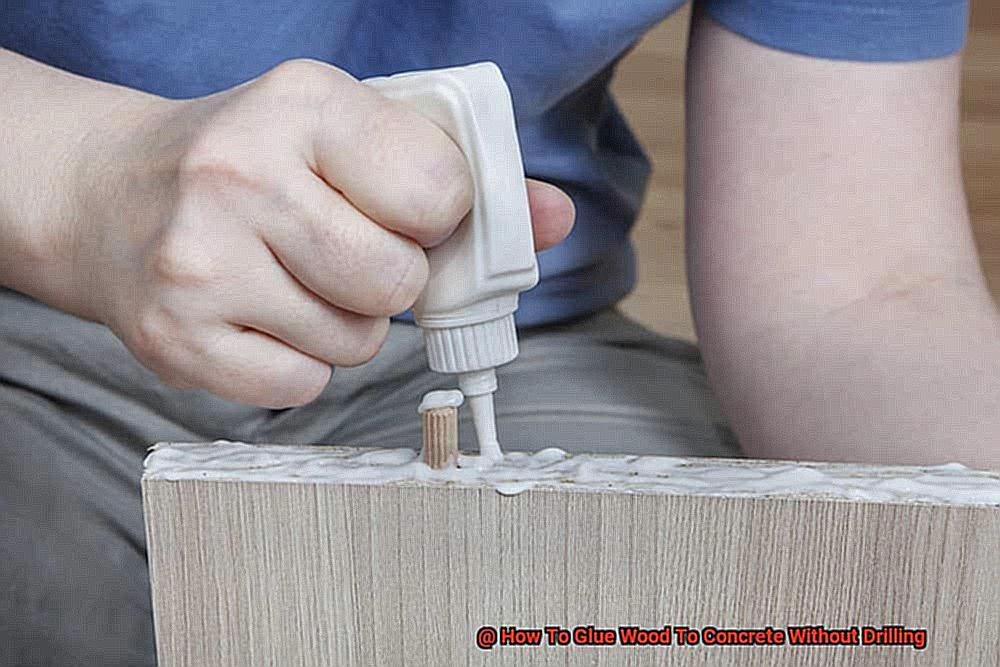
Adhesives Used for Gluing Wood to Concrete
If you’re looking to bond wood to concrete without drilling, the adhesive you choose is essential. With a variety of adhesives available in the market, selecting the perfect one for your project can be intimidating. But fear not. We’ve got you covered.
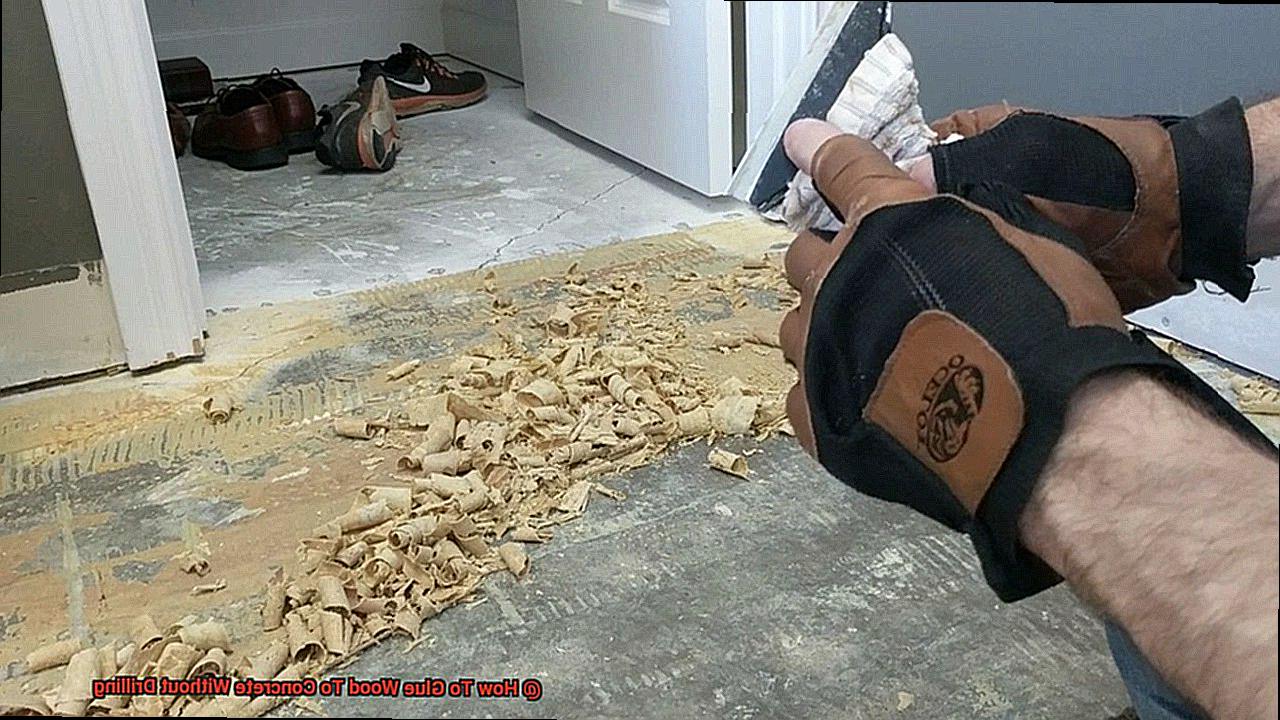
Epoxy is one of the most popular adhesives for gluing wood to concrete. This two-part adhesive requires mixing before application, creating an incredibly strong and permanent bond. Plus, it’s resistant to water and temperature changes, making it perfect for outdoor projects.
Polyurethane adhesives are another excellent option known for their outstanding bonding strength and flexibility. They can fill gaps and spaces between wood and concrete surfaces, resulting in a seamless bond that’s both strong and long-lasting.
Acrylic adhesives are easy to apply and dry quickly, making them ideal for fast projects. Not only that, but they’re also water-resistant and suitable for both indoor and outdoor use.
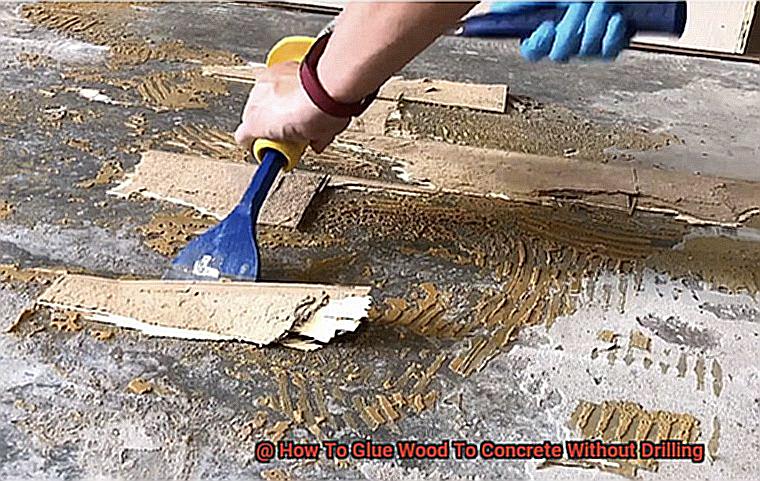
Other types of adhesives are available, such as cyanoacrylate (super glue), silicone, and construction adhesive. Each adhesive has its unique properties, so it’s crucial to choose the right one for your specific project.
Before selecting an adhesive, consider the project requirements. Will it be used indoors or outdoors? Will it be exposed to water or temperature changes? These factors play a vital role in determining which adhesive to use for your project.
Remember, when gluing wood to concrete without drilling, ensure both surfaces are clean and dry before applying the adhesive. Also, keep in mind the weight of the wood and any stress that will be placed on the bond.
In conclusion, selecting the right adhesive is crucial for ensuring a strong bond between wood and concrete. With various types of adhesives available in the market, choose wisely based on your project requirements.
Using Construction Adhesive for Gluing Wood to Concrete
When selecting your construction adhesive, it’s important to consider the specifics of your project. Will the wood be used indoors or outdoors? Will it be exposed to water or temperature changes? What is the weight of the wood?
Once you’ve determined your needs, choose the appropriate adhesive that will offer the best bonding strength and curing time.
Before applying the adhesive, it’s crucial to properly prepare both surfaces. Ensure they are clean, dry, and free of any debris or dust. A wire brush or sandpaper can be used to roughen up the surface of the concrete and improve the bond.
Now comes the fun part – applying the adhesive. Spread a generous amount of construction adhesive evenly over the surface of the wood using a notched trowel. Be sure to leave enough space around the edges of the wood to allow for expansion and contraction. Then, carefully press the wood onto the concrete surface and use clamps or weights to hold it in place while the adhesive cures.
The curing time will depend on the type of adhesive used, but waiting at least 24 hours before removing any clamps or weights is recommended. After that, voila. You have successfully attached wood to concrete without drilling.
Using construction adhesive for gluing wood to concrete without drilling is a reliable solution. Just remember to choose the right adhesive for your project and properly prepare the surfaces before applying it. With these tips in mind, you’ll be well on your way to completing your DIY project with ease.
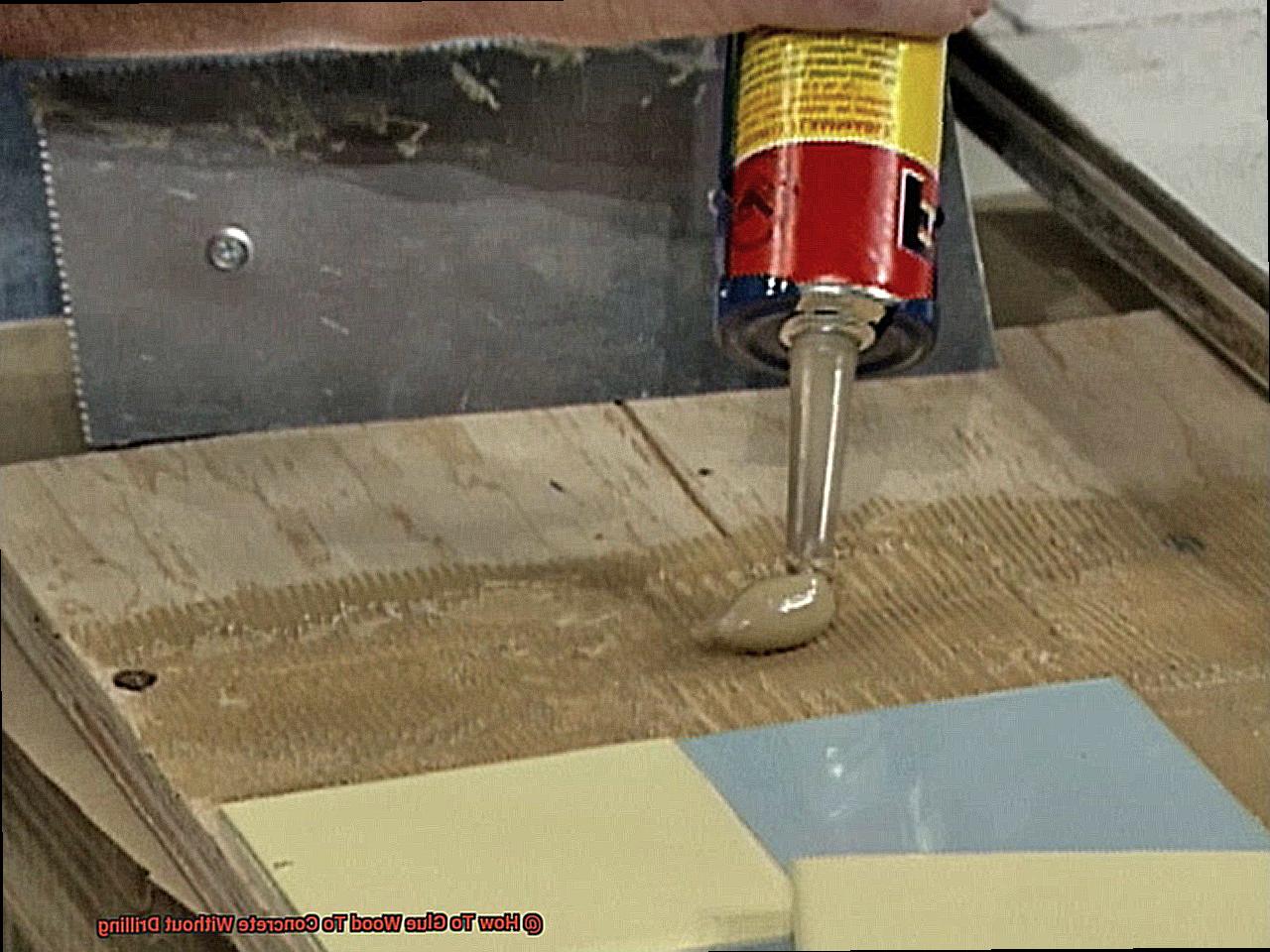
Using Liquid Nails for Gluing Wood to Concrete
This widely-used adhesive is a top choice for DIY enthusiasts and professionals alike, due to its ability to create a durable and permanent bond between two surfaces.
To ensure success, it’s crucial to properly prepare the surfaces before applying Liquid Nails. Both the concrete and wood surfaces should be clean, dry, and free of any debris or oils. Once you’ve completed this step, apply the adhesive to the back of the wood using either a caulking gun or a putty knife. Make sure to apply it in a zigzag pattern so that it covers the entire surface area of the wood.
After applying the adhesive, press the wood firmly onto the concrete surface and hold it in place for a few minutes. This allows sufficient time for the adhesive to bond with both surfaces, ensuring a strong and long-lasting hold.
Keep in mind that Liquid Nails requires sufficient drying and curing time before it can bear weight or stress. For best results, wait at least 24 hours before subjecting the newly-bonded surfaces to any external forces.
It’s important to take safety precautions when handling Liquid Nails. Wear gloves and protective eyewear in a well-ventilated area, as this will prevent skin irritation and minimize inhalation of fumes. And remember to store the adhesive in a cool and dry place for optimal performance.
Liquid Nails is an excellent choice for attaching wood to concrete without drilling. With proper preparation and application techniques, this versatile adhesive can create a strong bond between these two surfaces.
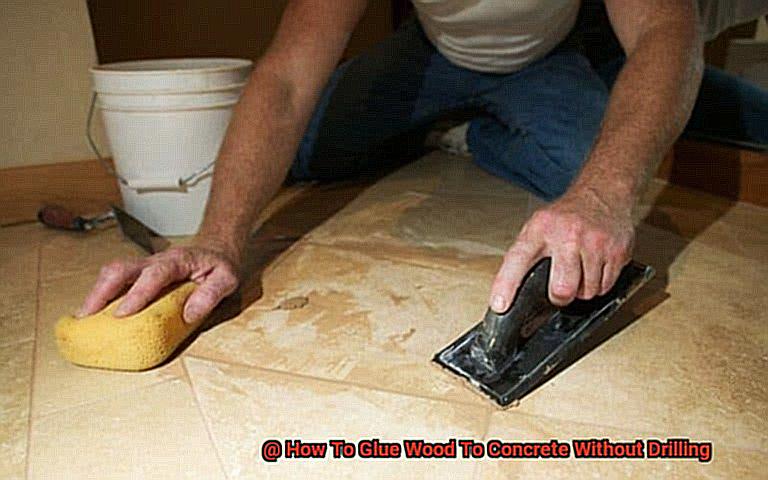
Using Two-Part Epoxy or Polyurethane Resins for Gluing Wood to Concrete
The answer lies in two-part epoxy or polyurethane resins. These adhesives are renowned for their exceptional bonding strength and are perfect for this type of application.
Firstly, it’s essential to prepare both surfaces thoroughly. Clean off any dirt, dust or debris to ensure a smooth and even surface. Then, rough up the surfaces of both the wood and concrete with a sandpaper to create a better surface for the adhesive to bond to.
After preparing the surfaces, mix the two-part epoxy or polyurethane resin according to the manufacturer’s instructions. Apply a generous amount of adhesive to both surfaces, ensuring that you cover the entire area that will be bonded together.
Now comes the exciting part, pressing the wood firmly onto the concrete while ensuring proper alignment. Using clamps or weights, hold the two surfaces together while the adhesive dries. Be sure to follow the manufacturer’s recommended drying time before removing any clamps or weights.
However, it’s important to note that these adhesives can be messy and have a strong odor. Make sure you work in a well-ventilated area and wear protective gloves and eyewear.
Pros and Cons of Glue Bonded vs Mechanical Fasteners
The two primary methods are glue bonding and mechanical fasteners, each with its own set of pros and cons. Let’s dive into the advantages and disadvantages of both methods.
Glue bonding is an adhesive method that creates a seamless finish. If aesthetics are important for your project, glue bonding is an excellent option. It also distributes the load evenly across the surface, preventing any cracking or splitting in the wood.
Not only that, but it can also be a quicker process than using mechanical fasteners. However, removing the wood if needed in the future can be challenging due to the strong bond created by the adhesive. Additionally, a clean and dry surface is necessary for optimal adhesion, requiring additional preparation time.
Mechanical fasteners involve using screws or nails to attach the wood to the concrete surface. They provide greater adjustability and flexibility during installation, and the wood can be easily removed and replaced without damaging the surface. Mechanical fasteners also provide a stronger hold in high-stress areas such as outdoor decks or stairs, and they do not require as much surface preparation as glue bonding.
However, visible screws or nails can detract from the overall appearance of the project. If not installed correctly or in the right location, they can cause splitting or cracking in the wood.
Ultimately, choosing between glue bonding and mechanical fasteners depends on several factors such as the specific project and personal preferences. If you want a quicker installation process with a seamless finish, glue bonding is an excellent option. However, if adjustability and a stronger hold are necessary or visible screws or nails aren’t desirable, then mechanical fasteners may be the way to go.
Important Considerations When Gluing Wood to Concrete
- First, selecting the right adhesive is crucial. High-quality construction adhesives that are specifically designed for wood-to-concrete bonding are the best choice. These adhesives contain strong bonding agents that can withstand weight and stress, ensuring a firm grip.
- Secondly, preparing both surfaces properly is essential. It’s important to clean the concrete surface of any dirt or debris and roughen it up with sandpaper or a wire brush for better bonding. Similarly, ensure that the wood surface is clean and dry, with any loose or damaged areas repaired or replaced.
- Thirdly, applying the adhesive correctly is key. A thin, even layer should be applied to both surfaces using a trowel or brush, being careful not to apply too much. Press the two surfaces together firmly and make sure they are aligned correctly.
- Lastly, allow sufficient time for the adhesive to dry and cure before using the glued area. This timing may vary depending on the adhesive type and environmental conditions, so be patient.

Tips for Successful Glue Bonded Joints on Wood and Concrete Surfaces
It may seem like a daunting task, but with the right preparation and technique, you can achieve a strong and long-lasting bond. Here are 5 tips to help you create the perfect glue bonded joint:
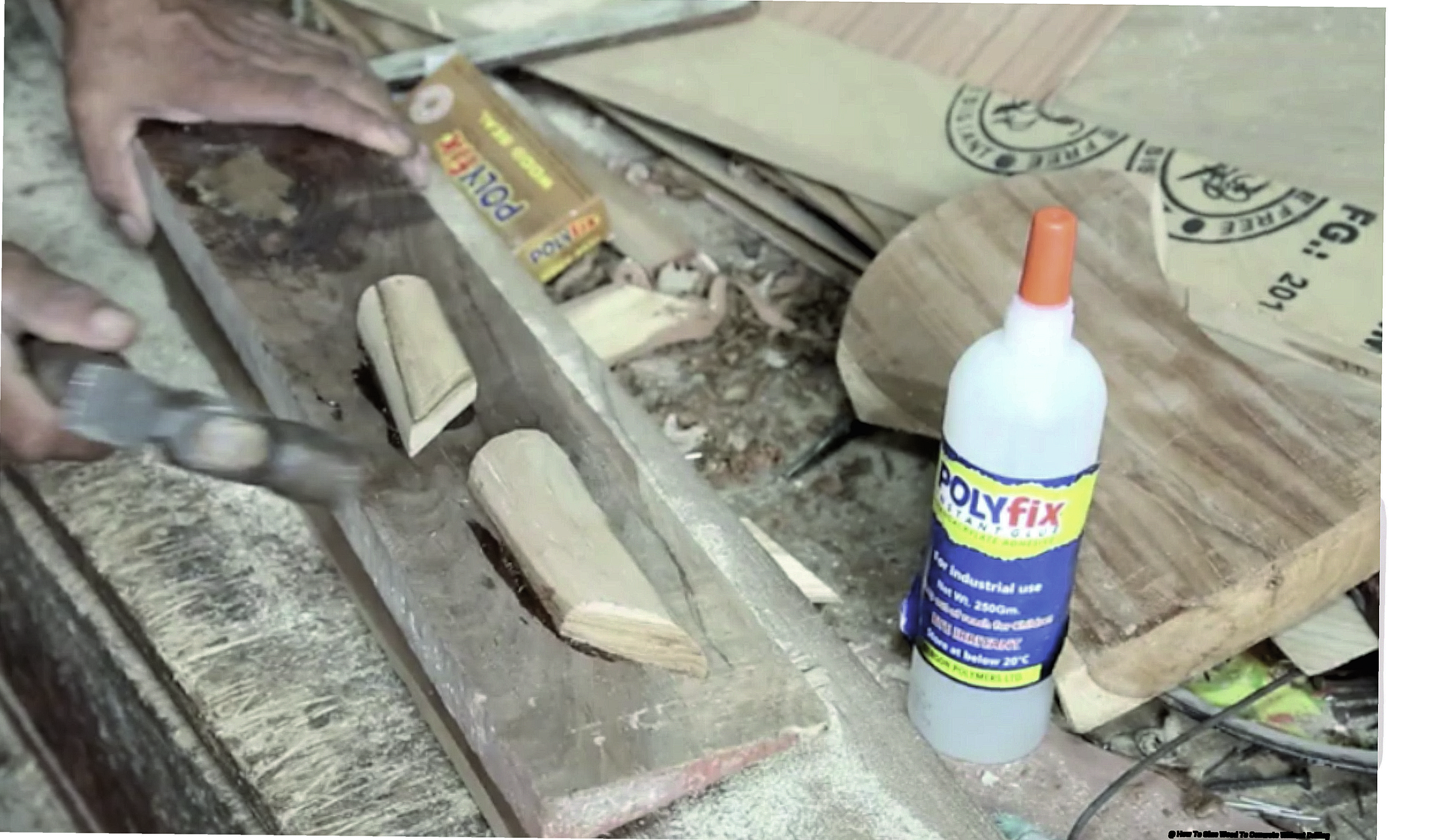
Surface preparation
The key to a successful bond is ensuring that both surfaces are clean and dry. Use a wire brush or sandpaper to remove any debris or contaminants that could interfere with the adhesive bond.
Choose the right adhesive
Not all adhesives are created equal. For bonding wood to concrete, a polyurethane-based adhesive is recommended as it can withstand outdoor conditions and has excellent bonding strength.
Apply the adhesive correctly
Follow the manufacturer’s instructions for applying the adhesive, and make sure to evenly apply a thin layer to both surfaces before pressing them firmly together.
Allow adequate drying time
Patience is key when it comes to drying time. The length of time will depend on the specific product used, but it’s important to allow ample drying time before subjecting the joint to any stress or weight.
Consider using mechanical fasteners
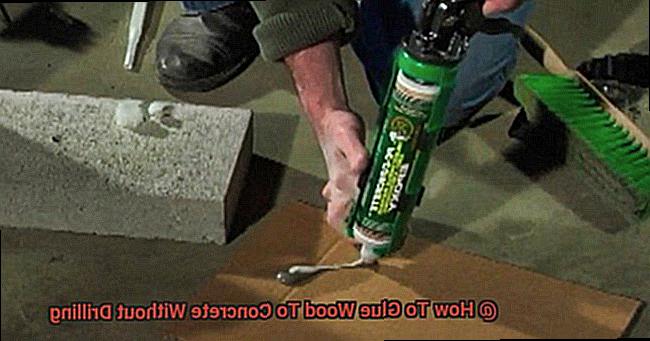
While not necessary, using mechanical fasteners such as screws or nails in addition to the adhesive can provide extra reinforcement and stability for your joint.
By following these tips, you’ll be able to confidently bond wood to concrete surfaces without drilling and achieve a strong and durable bond. However, it’s important to keep in mind that gluing may not be suitable for all applications, so consulting with a professional is always recommended.
Now that you’re armed with these tips, go ahead and tackle that DIY project with confidence.
uBWetxzqnIs” >
Conclusion
To sum it up, gluing wood to concrete without drilling is an effortless and efficient solution that saves you time and effort while preserving your concrete surface. By selecting the appropriate adhesive, preparing both surfaces meticulously, and allowing enough drying time, you can attain a robust and long-lasting bond between wood and concrete.
The market offers various types of adhesives, each with unique features suitable for specific project requirements. Two-part epoxies or polyurethane resins are famous for their exceptional bonding strength, while construction adhesives such as Liquid Nails provide reliable performance and convenience.
When deciding between glue bonding and mechanical fasteners, it’s crucial to weigh the pros and cons carefully based on the project needs. Glue bonding provides a seamless finish, while mechanical fasteners offer greater adjustability and flexibility during installation.
By following our expert tips on surface preparation, adhesive selection, application technique, drying time, and using mechanical fasteners if necessary, you’ll be able to bond wood to concrete surfaces like a pro confidently. Don’t hesitate to consult with a professional before embarking on any DIY project.
In conclusion, with the right tools in hand and our expert advice at your disposal, you can successfully glue wood to concrete without drilling.

